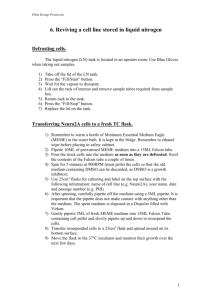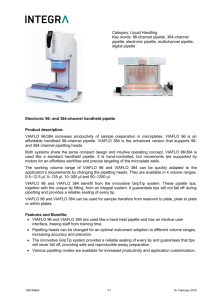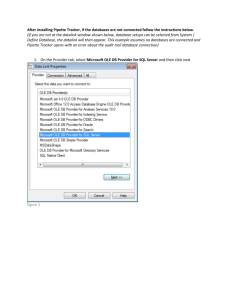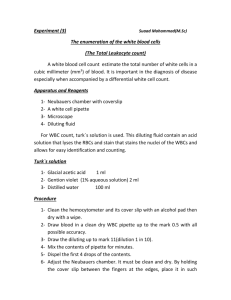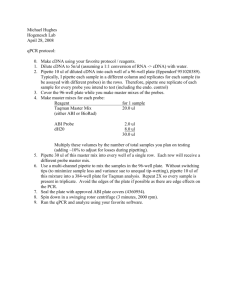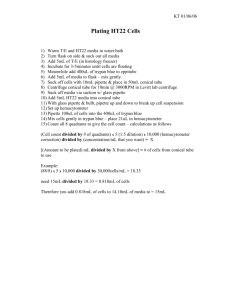Personnel
advertisement
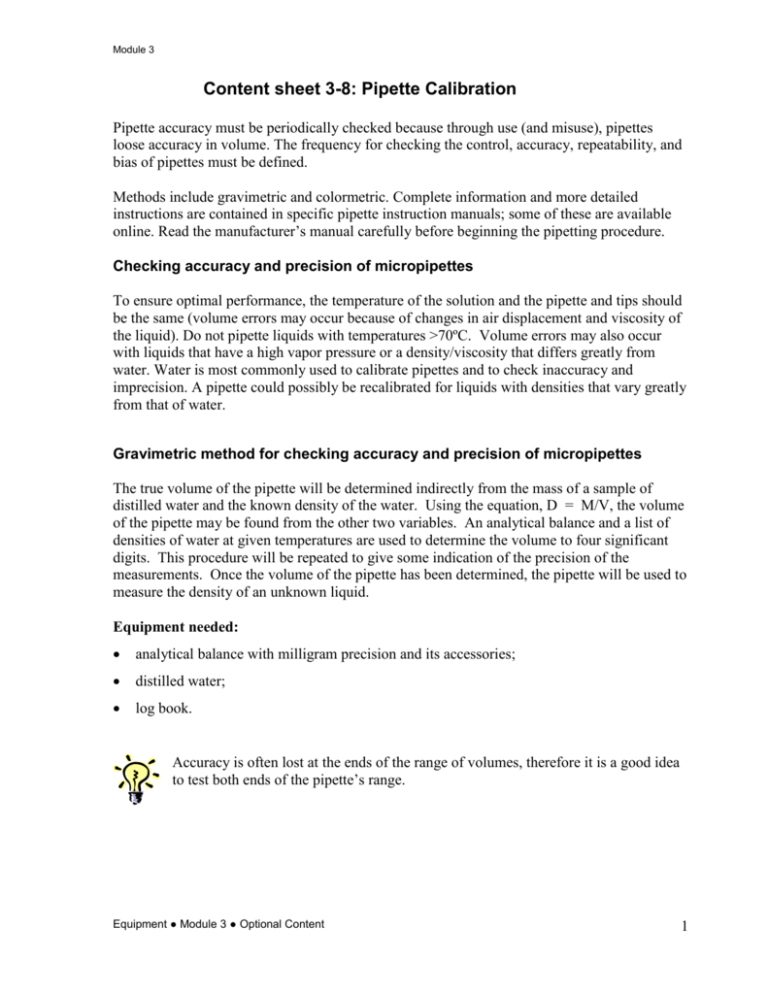
Module 3 Content sheet 3-8: Pipette Calibration Pipette accuracy must be periodically checked because through use (and misuse), pipettes loose accuracy in volume. The frequency for checking the control, accuracy, repeatability, and bias of pipettes must be defined. Methods include gravimetric and colormetric. Complete information and more detailed instructions are contained in specific pipette instruction manuals; some of these are available online. Read the manufacturer’s manual carefully before beginning the pipetting procedure. Checking accuracy and precision of micropipettes To ensure optimal performance, the temperature of the solution and the pipette and tips should be the same (volume errors may occur because of changes in air displacement and viscosity of the liquid). Do not pipette liquids with temperatures >70ºC. Volume errors may also occur with liquids that have a high vapor pressure or a density/viscosity that differs greatly from water. Water is most commonly used to calibrate pipettes and to check inaccuracy and imprecision. A pipette could possibly be recalibrated for liquids with densities that vary greatly from that of water. Gravimetric method for checking accuracy and precision of micropipettes The true volume of the pipette will be determined indirectly from the mass of a sample of distilled water and the known density of the water. Using the equation, D = M/V, the volume of the pipette may be found from the other two variables. An analytical balance and a list of densities of water at given temperatures are used to determine the volume to four significant digits. This procedure will be repeated to give some indication of the precision of the measurements. Once the volume of the pipette has been determined, the pipette will be used to measure the density of an unknown liquid. Equipment needed: analytical balance with milligram precision and its accessories; distilled water; log book. Accuracy is often lost at the ends of the range of volumes, therefore it is a good idea to test both ends of the pipette’s range. Equipment ● Module 3 ● Optional Content 1 Module 3 Procedure: 1. Obtain the pipette to be tested and a few milliliters of water. Place a weigh boat on the analytical balance, close the doors, and press “tare.” 2. Set the pipette to the desired volume, determine how much that water should weigh. “Prime” the pipette tip once by drawing up water and dispensing it back into the water container. 3. Draw water up into the tip again and eject it into the weight boat. Shut the door and record the mass. 4. Press “tare.” 5. Repeat steps 3 and 4 about 10 times. Record each result. 6. Calculate the mean value, the variance and the coefficient of variation. 7. Draw conclusions according to the standards used. In this example of recorded results, “Accuracy bias” corresponds to “Systematic error” and “Fidelity/Repeatability” corresponds to “Random error.” If there is a need to fine-tune the process, it is possible to take into account the effect of temperature and pressure with a correction factor “Z”. This requires having a basic knowledge in biostatistics. Equipment ● Module 3 ● Optional Content 2 Module 3 Leak test—Draw a quantity of water that corresponds to the pipette’s maximum volume. Wait one minute while holding the pipette vertically. No drop should form. Log book—All test results are saved for each pipette providing a full calibration history for each pipette, which can be accessed at any time. Keep records of pipette maintenance in a log book. The person performing the checks should record: pipette serial number, manufacturer pipette location type of pipette and volume date the pipette was cleaned and decontaminated date and results of validation checks (leak test, accuracy, and repeatability) name of the person performing the maintenance and checks any comments concerning the pipette. If the pipette fails the criteria, take corrective action (and perform the analysis again.) Do not use pipettes that do not pass. Notify supervisor. Note: Regular maintenance (e.g., cleaning) should also be performed either by the user or a service technician according to manufacturer’s instructions. Equipment ● Module 3 ● Optional Content 3
